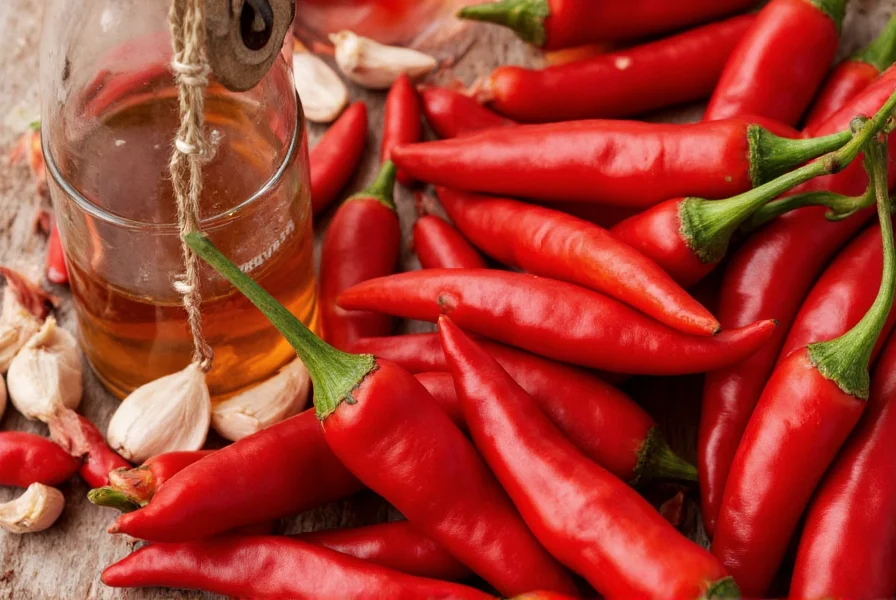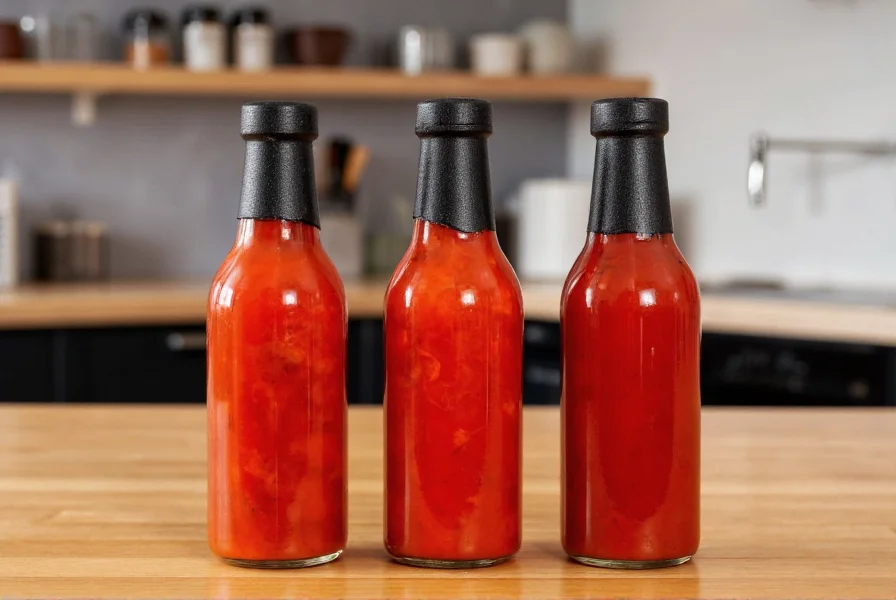Understanding what makes exceptional red chili sauce begins with recognizing its fundamental components and culinary applications. This vibrant condiment serves as both a flavor enhancer and heat source in countless dishes worldwide, from Asian stir-fries to Mexican salsas and Caribbean jerk preparations. Unlike single-origin hot sauces, traditional red chili sauce incorporates multiple chili varieties to create complex flavor profiles ranging from sweet and smoky to intensely fiery.
The Essential Components of Quality Red Chili Sauce
Authentic red chili sauce relies on specific ingredients working in harmony. The foundation consists of ripe red chili peppers—typically cayenne, árbol, or bird's eye varieties—providing both color and heat. Vinegar (usually white or rice vinegar) contributes necessary acidity that preserves the sauce while enhancing flavor complexity. Garlic adds aromatic depth, while salt serves as both preservative and flavor amplifier. Some traditional recipes incorporate sugar or fruit elements like mango or tamarind to balance heat with sweetness.
The preparation method significantly impacts final quality. Traditional stone grinding creates a smoother texture than mechanical blending, while proper fermentation (in some varieties) develops deeper flavors. Commercial sauces often include stabilizers and preservatives, whereas homemade versions typically contain only natural ingredients with shorter shelf lives.

Global Variations and Culinary Applications
Red chili sauce manifests differently across culinary traditions, each with distinct characteristics:
| Cuisine | Characteristics | Best Dish Pairings |
|---|---|---|
| Thai | Bright red, medium heat, slightly sweet with garlic notes | Pad Thai, spring rolls, dipping sauces |
| Mexican | Deeper red, smokier, often includes roasted peppers | Tacos, enchiladas, huevos rancheros |
| Chinese | Thicker texture, balanced heat with vinegar tang | Stir-fries, dumplings, noodle dishes |
| Caribbean | Vibrant color, intense heat with tropical fruit notes | Jerk chicken, rice and peas, seafood |
Understanding these regional differences helps home cooks select the appropriate sauce for specific dishes. For instance, Thai-style red chili sauce works best with delicate seafood preparations, while Mexican varieties complement heartier meat dishes. Chinese red chili sauce typically contains additional spices like star anise, making it ideal for complex stir-fry sauces.
Homemade vs. Commercial Red Chili Sauce
Creating red chili sauce at home offers complete control over ingredients and heat level. A basic homemade red chili sauce recipe requires:
- 1 cup fresh red chili peppers (stemmed and seeded)
- 3 cloves garlic
- ¼ cup vinegar
- ½ teaspoon salt
- 1 tablespoon sugar (optional)
Combine ingredients in a food processor and blend until smooth. For traditional texture, use a mortar and pestle. Strain through a fine mesh sieve for restaurant-quality smoothness. Homemade versions typically last 2-3 weeks refrigerated.
When selecting commercial products, examine the ingredient list carefully. The best store-bought red chili sauce for stir fry contains minimal additives and lists chili peppers as the first ingredient. Avoid products with excessive preservatives or artificial colors. Premium brands often specify chili varieties used and may indicate Scoville heat units for precise heat management.

Practical Usage Guidelines
Mastering red chili sauce usage elevates everyday cooking. Start with these professional techniques:
- Temperature control: Add sauce early in cooking for milder heat distribution, or at the end for sharper, more pronounced spiciness
- Balance with dairy: Counteract excessive heat with yogurt, coconut milk, or cream without diminishing flavor complexity
- Marinade component: Combine with citrus and oil for meat tenderizing while adding flavor depth
- Dipping sauce base: Mix with honey or fruit preserves for balanced sweet-spicy accompaniments
For those wondering how to use red chili sauce in cooking beyond simple additions, consider these advanced applications:
- Emulsify with oil for glossy finishing sauces
- Infuse into mayonnaise for spicy spreads
- Combine with soy sauce and rice vinegar for authentic dipping sauces
- Add to tomato-based sauces for depth and complexity
Storage and Shelf Life Considerations
Proper storage maintains both safety and flavor quality. Commercial red chili sauce typically remains viable for 12-18 months unopened. After opening, refrigerate and use within 6 months for optimal flavor. Homemade versions require refrigeration and should be consumed within 3 weeks.
Signs of spoilage include:
- Change in color (browning or darkening)
- Separation that doesn't reincorporate with shaking
- Mold growth (discard immediately if present)
- Off or fermented smell
Understanding Heat Levels and Substitutions
When comparing red chili sauce vs sriracha, note key differences: sriracha contains significant garlic and sugar with a thicker consistency, while traditional red chili sauce emphasizes pure chili flavor with brighter acidity. For substitution purposes:
- Use 1:1 replacement for similar heat profiles
- Reduce sugar in recipe when substituting sriracha
- Add vinegar when using milder alternatives
- Adjust quantities based on Scoville ratings (typically 1,000-22,000 SHU)
For those seeking authentic Thai red chili sauce alternatives, consider:
- Chili garlic sauce (similar heat, more garlic-forward)
- Sambal oelek (purer chili flavor, less vinegar)
- Gochujang (Korean alternative with fermented depth)
Frequently Asked Questions
What is the difference between red chili sauce and hot sauce?
Red chili sauce specifically refers to sauces made primarily from red chili peppers with standardized ingredient ratios, while hot sauce is a broader category that can include any spicy sauce regardless of base ingredients. Authentic red chili sauce maintains consistent texture and flavor profile suitable for cooking, whereas hot sauces vary widely in consistency and culinary application.
Can I make red chili sauce less spicy after it's prepared?
Yes, you can reduce spiciness by adding acidic components like lime juice or vinegar, which help neutralize capsaicin. Dairy products such as yogurt or coconut milk effectively counteract heat without diluting flavor. For best results, incorporate these gradually while tasting until desired heat level is achieved.
How do I choose the best red chili sauce for stir fry?
Select a sauce with visible chili pulp rather than completely smooth texture, as this indicates higher chili content. Check that chili peppers appear first in the ingredient list, and avoid products with excessive thickeners or artificial colors. For authentic stir fry applications, choose sauces specifically labeled for Asian cuisine with balanced vinegar content that won't curdle when added to hot woks.
Does red chili sauce contain gluten?
Traditional red chili sauce ingredients are naturally gluten-free. However, some commercial varieties may include wheat-based thickeners or be processed in facilities with gluten-containing products. Always check labels if gluten sensitivity is a concern, and look for certified gluten-free products when necessary.
What gives red chili sauce its distinctive red color?
The vibrant red color comes primarily from ripe red chili peppers, particularly varieties high in capsanthin and other carotenoids. Proper processing preserves these pigments, while inferior products may use artificial coloring. Authentic sauces maintain their color naturally through careful selection of fully ripened peppers and appropriate processing methods that protect pigment integrity.










 浙公网安备
33010002000092号
浙公网安备
33010002000092号 浙B2-20120091-4
浙B2-20120091-4